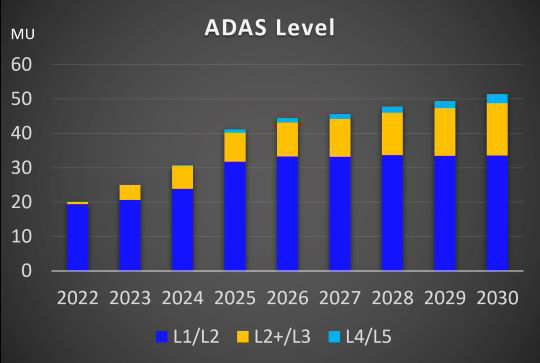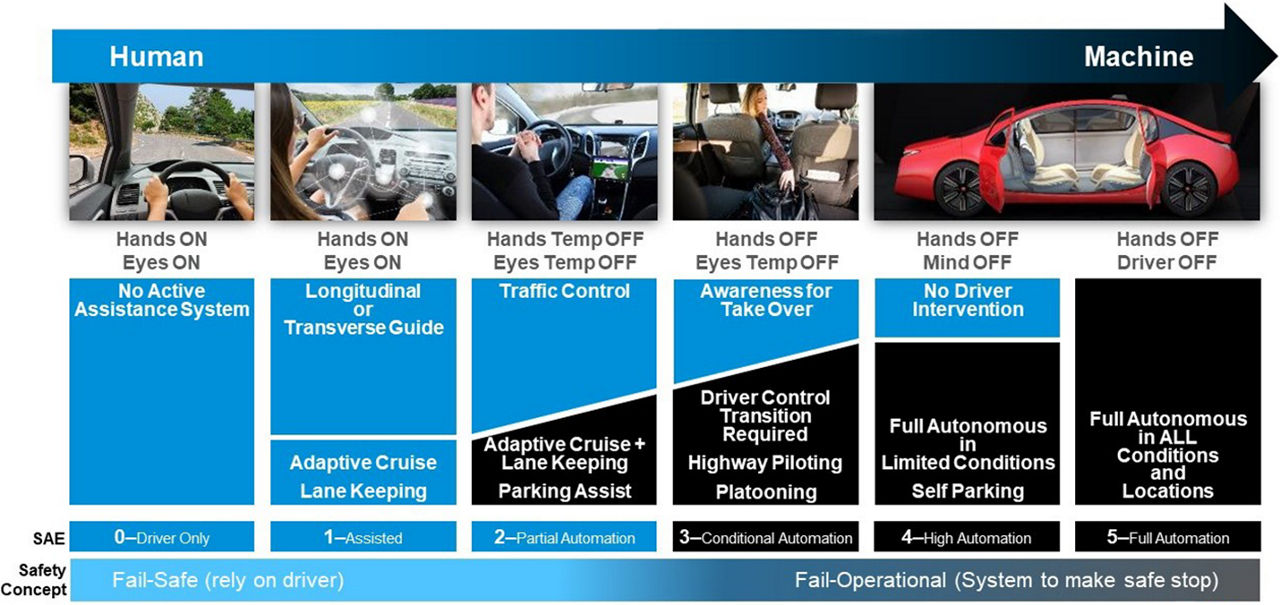S = safer memory for the automotive industry — Micron SAFER memory
Today’s vehicles increasingly rely on semiconductors to enable control systems that enhance driver and passenger safety. In turn, these and other significant benefits are driving the trend toward even greater use of semiconductors, most notably highly complex semiconductors and the associated high-performance memory and storage in the car. Collectively, this trend increases driver and passenger safety is projected to drive the growth of semiconductor consumption to one of the highest rates within the semiconductor industry as the automotive industry accelerates to deliver fully autonomous, self-driving vehicles.
Bringing safety to ADAS and IVE
The lines between advanced driver-assistance systems (ADAS) and in-vehicle entertainment (IVE) are becoming blurred. That is, the two domains interact with one another to such a degree that the need for system-level safety (Automotive Safety Integrity Level or ASIL) is also finding its way into IVE.
For example, the driver monitoring system (DMS), which is mandatory to implement the next form of HMI (human-machine interface), gesture recognition. Figure 1 shows the rate at which ADAS levels will increase to match the functionality required in features such as DMS. Simple gestures recognized by the DMS can also control IVE and body control functions within the vehicle, including adjusting stereo volume or opening or closing a sunroof.
 Figure 1. Evolution of ADAS. Source: Micron estimates
Figure 1. Evolution of ADAS. Source: Micron estimates
The DMS also records the physical position of the driver and passengers so that, if airbags are needed, this information can be used to determine the right level of charge for each airbag to prevent harming these people. Increasingly, these functions offered by the respective system manufacturers are becoming inextricably interconnected. Monitoring drivers’ awareness, recognizing gestures and providing information to properly deploy airbags reflect the growing need for functional safety with the upmost integrity (Figure 2). Based on general industry sources, the airbag needs to support ASIL D, the most stringent safety requirement in the industry.
Levels of autonomy and safety concept
FuSa enables autonomous vehicles
 Figure 2: Growing trend for functional safety
Figure 2: Growing trend for functional safety
Functional safety necessary for integrating systems
In short, this integration of DMS and IVE is just one example of many. It underscores how functional safety systems permeate the vehicle and are quickly becoming nonnegotiable for applications that historically did not require ASIL support, such as gesture recognition. It is also enlightening to see not only how these applications need ASIL but also how they can support the highest ISO 26262 considerations and memory manufacturing.
While several approaches are recognized by ISO 26262 and can be used to achieve the requisite ASIL — including decomposition and hardware evaluation — employing an ISO 26262 ASIL D-certified DRAM provides many distinct advantages and values over these alternative approaches. These advantages include improved time to market and enhanced safety, but there could be cost and power increases from the use of redundancy for an approach based on decomposition.
When evaluating the ISO 26262 standard against a DRAM, several cases reflect that a DRAM is a class III hardware element vs. a class II hardware element as it was originally specified by the industry. Therefore, approaches to achieve the requisite ASIL might not be based on hardware evaluation after the first design iteration. This situation leaves the designer with a couple of choices going forward: Either secure an ISO ASIL-certified DRAM for future designs or rely on decomposition, which can increase the costs, power and risks discussed earlier.
The safest DRAM
In June 2022, Micron introduced the highest safety-certified LPDDR solution in the industry, the industry’s first and only ISO 26262 ASIL D-certified memory. The ASIL D-certified LPDDR5 family was created to address the challenges of and demands for today’s and tomorrow’s most demanding automotive designs while enabling fastest time to market, lower risk and potentially the lowest power and cost.
To learn more about the highest safety-certified solution in the industry, read “DRAM in Safety Critical Automotive Systems,” a Micron white paper that discusses functional safety as it applies to memory and systems and explains why Micron’s memory is the SAFER choice.
Additional resources
- Automotive Megatrends and Their Impact on Memory and Storage (White Paper)
- Automotive Memory: Quality vs Functional Safety and Why it Matters (Blog)
- Data-intensive Automotive Applications Require Advanced Memory and Storage (Video)
- Micron Automotive Portfolio Featured in Li Auto L9 and Desay SV IPU04
- Visit the Micron automotive page and the Functional Safety for Automotive | Micron Technology, Inc. page for white papers, video, automotive product portfolio and more.
The Micron SAFER automotive memory blog series
This series provides insight and guidance when considering breakthrough automotive memory solutions and support. SAFER incorporates five key concepts: (S) Safest solution currently available in the industry, (A) Automotive mindset, (F) Fault coverage, (E) Engineering leadership and (R) Risk management. Each letter associated with the acronym SAFER has a corresponding blog with associated content.
